© 2023 Kreativa. All rights reserved. Powered by JoomShaper
Christmas Greenings: A Brief History of the Christmas Tree
 |
| Christmas Tree Decorations, early to mid 20th Century Unknown Maker; Europe Ceramic and fabric; various dimensions 75.22 Gift Maxine A. Miller |
Tree for the Price of One
The practice of bringing trees and outdoor greens into the household has been practiced for centuries during the winter season. The ancient Egyptians, Romans, Vikings, and Druids, for example, all focused on celebrating the Winter Solstice by bringing nature into their respective homesteads. It is common knowledge that the Germans started the custom of bringing evergreens into their homes to celebrate the winter season. According to custom, this time of year is seen as the return in strength of the sun god who had been weakened during winter—and the evergreen plants served as a reminder that the god would glow again, and summer is to be expected. This post explores the history of the Christmas tree and looks at some examples of Christmas trees and related paraphernalia in the Bowers collections.
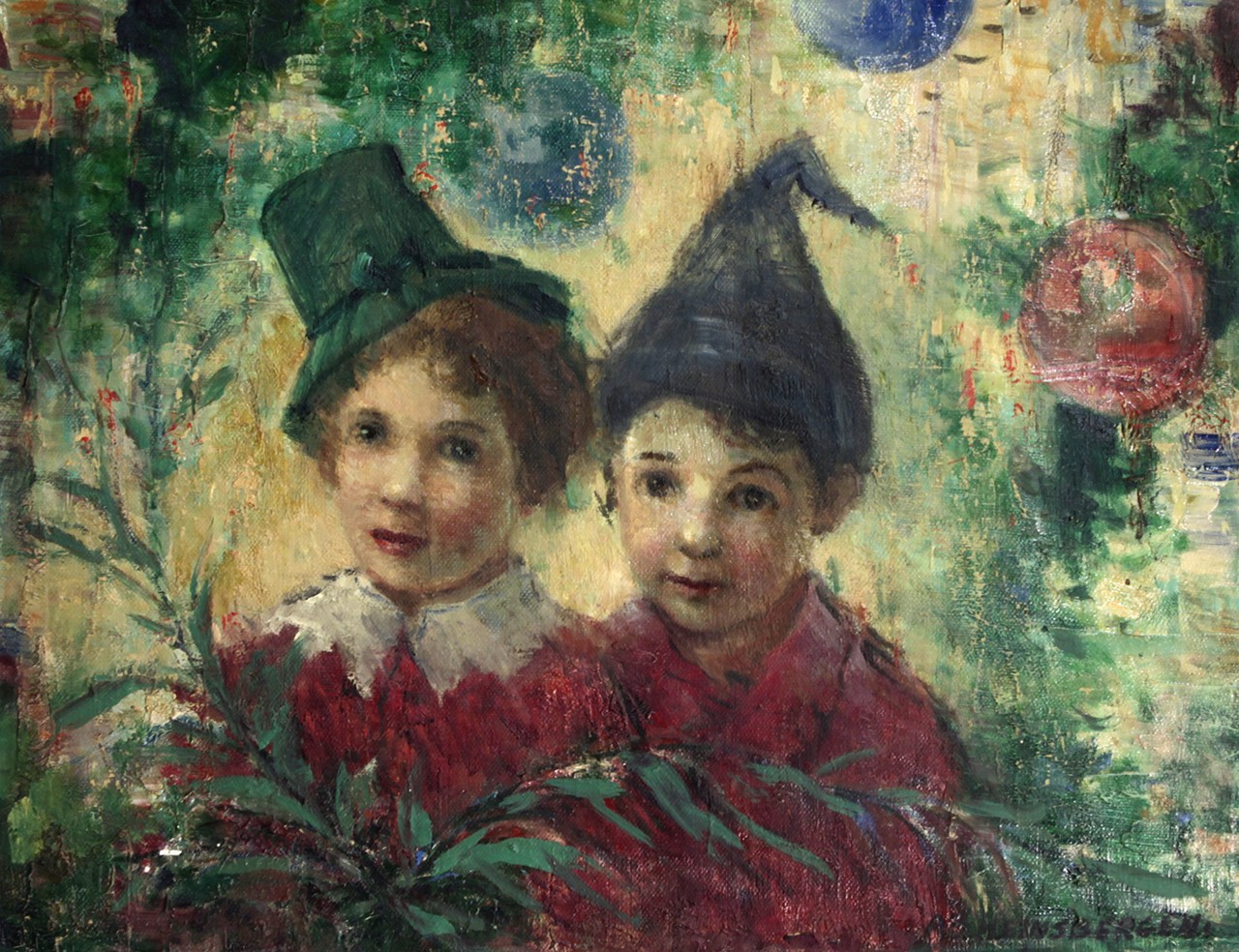 |
| Untitled (Two Children by a Christmas Tree), early to mid 20th Century Anthony Heinsbergen (Dutch-born American, 1894-1981) Oil on canvas; 14 × 18 in. 81.55.152 Anthony B. Heinsbergen Estate |
Dropping the Proverbial Tannen-bomb
Fast-forward to 19th century England when Queen Victoria and Prince Albert held the crown. In 1848, an engraving of the royal family in Illustrated London News around a decorated Christmas tree at Windsor Castle was published and ignited a national trend. The trend later moved across the pond to the United States at the tail end of the 1800’s, but more slowly, as they were understandably less monarchy-fixated. The notion of bringing an entire spruce or evergreen tree inside was a novel idea for the laymen of Great Britain—but Victoria, being of Hanoverian descent from her paternal lineage, was no stranger to housing and decorating a Christmas tree. She popularized the tradition even further with her German husband, Prince Albert, and their children. Besides bringing the Christmas tree indoors, the Germans also created the first commercially sold glass Christmas ornaments in the 16th Century near Dresden.
Pining for Ornaments
No Christmas tree post would be complete without looking at the objects used to decorate them. Little is known about the Christmas tree toppers and ornaments in this post except that they are made in various European countries. The tall angel toppers were possibly made at the beginning of the 20th Century. We do know that the smaller angel ornaments were produced in Cold War-era West Germany prior to their donation to the Bowers Museum in 1975. Despite both the earlier and later tree decorations pairing fabric with ceramic we can see that the mid-century ornaments are far more abstracted than those dating from earlier in the century, a trend which this blog more-regularly explores in context of paintings and prints.
Fir-tographs
Of course, Christmas trees featured heavily in homes and institutions even around the turn of the 20th century. Of the three images featured in this section one likely hails from the Chicago area. It is not noted who is on the photograph, but it was likely a relative of the artist Clay Kelly, or his wife, Natalie Melamed Kelly. The other two are from the Santa Ana area. The group shot with children in their holiday best appears to have been taken at Roosevelt School at First and Maple streets. The final image was taken in an unidentified home by Edward Cochems, likely to be used as advertising or magazine stock.
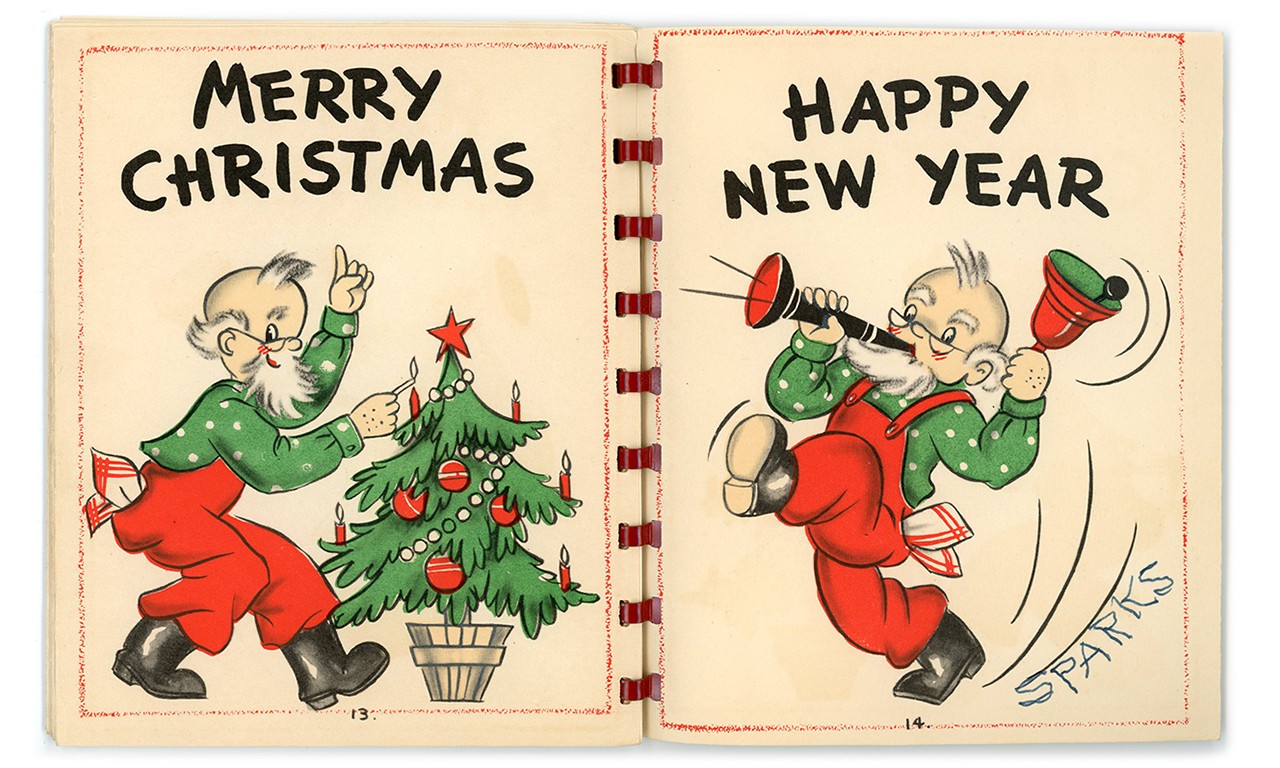 |
| Christmas Card, 1943 Hallmark Card (founded 1910); United States Paper and ink; 6 ¼ x 5 in. 40712.23 Leo Tiede Photo Collection |
Hot Off the Cy-Press
With just shy of 300 Christmas cards in its collections, there are no shortage of Christmas trees in the Bowers Museum’s Printed Materials department. This card—practically a booklet at a whopping 14 pages—was made by the Hallmark company some time shortly before its envelope was postmarked in 1943. Subscribing to the proud and uniquely American tradition of hillbilly Christmas, this card goes through a handful of scenarios in which its pages have been damaged by some inattentiveness on the part of its protagonist: cut-out holes were “blown” through one page when cleaning his rifle, another page is covered in long-form and error-laden arithmetic from his computation of the “hawg tax,” and grandpa ripped out most of a page for use in the outhouse. Though a little dated in terms of a stereotypical depiction, the card ends on a sweet note by pairing Christmas wishes with a tannenbaum.
Have a wonderful, warm holiday season!
Text and images may be under copyright. Please contact Collection Department for permission to use. References are available on request. Information subject to change upon further research.

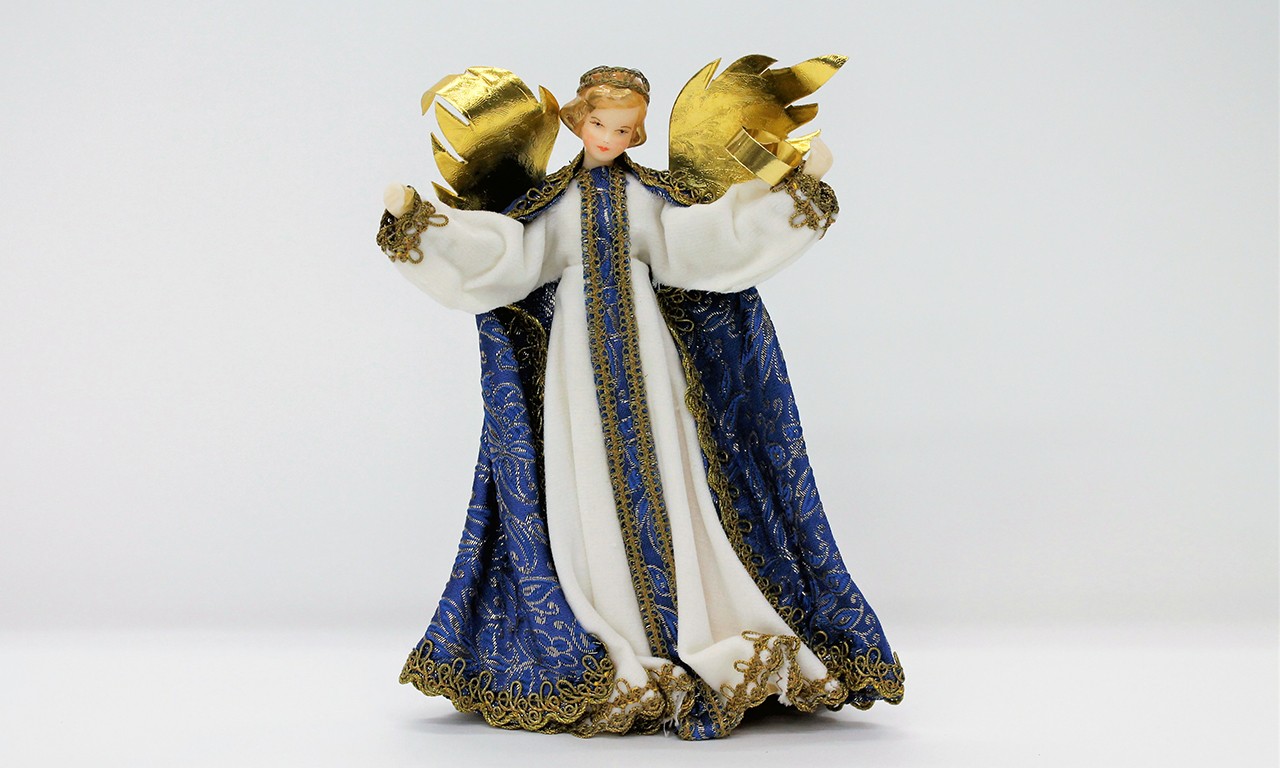
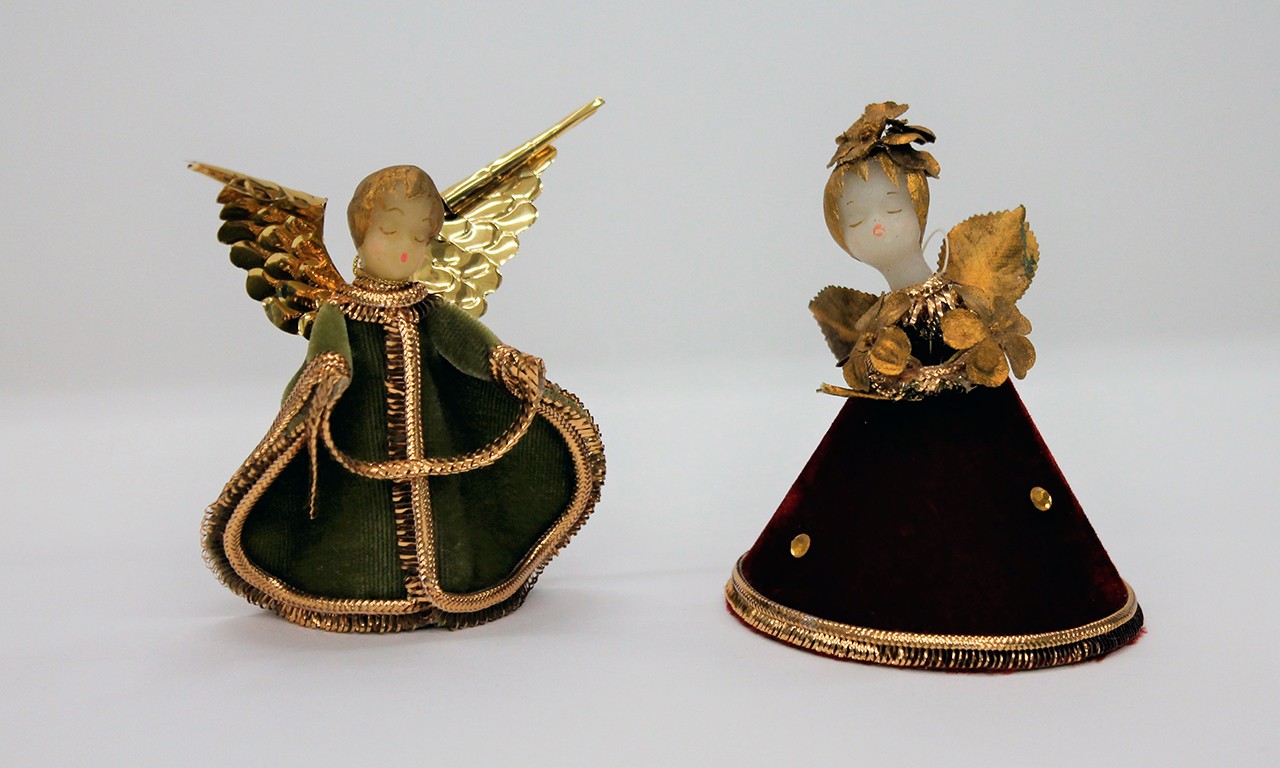
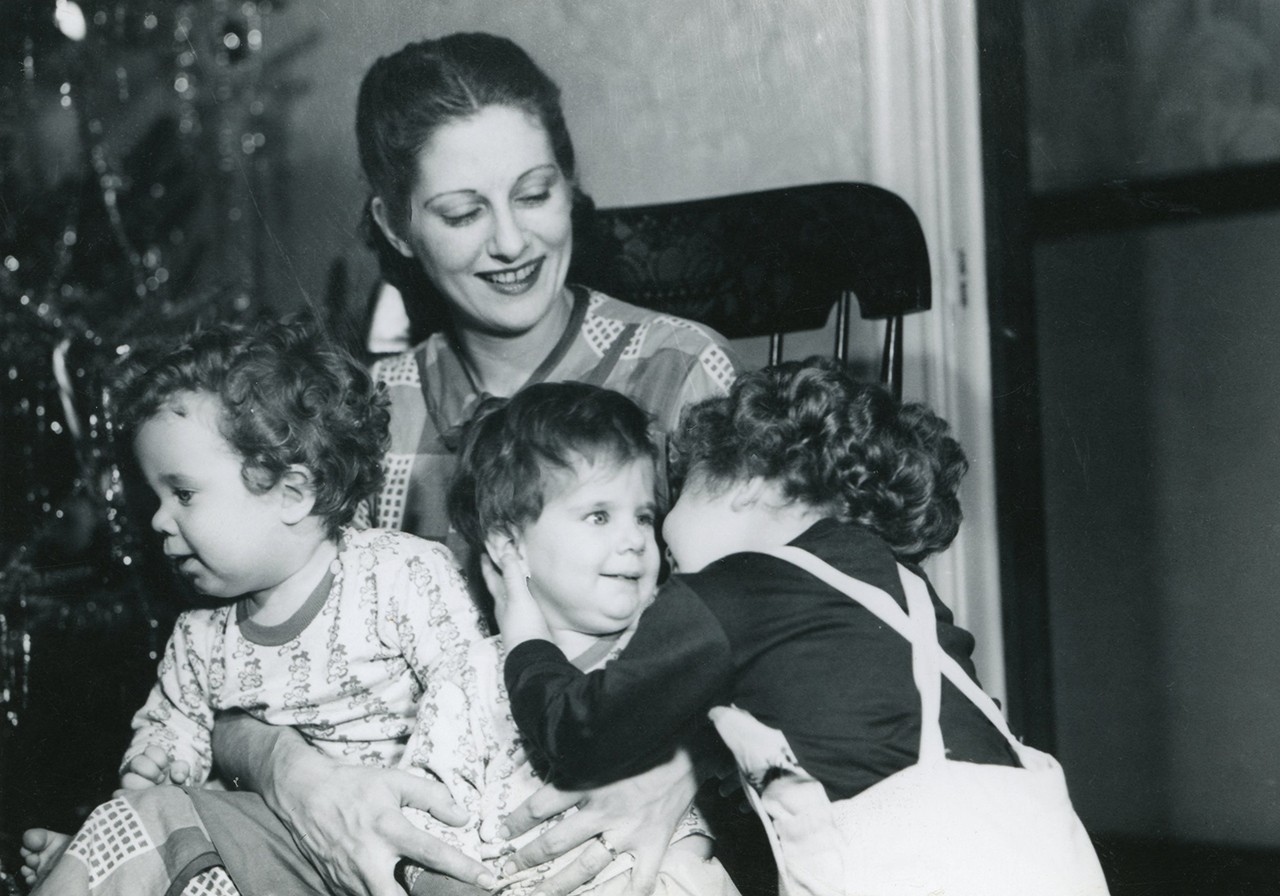
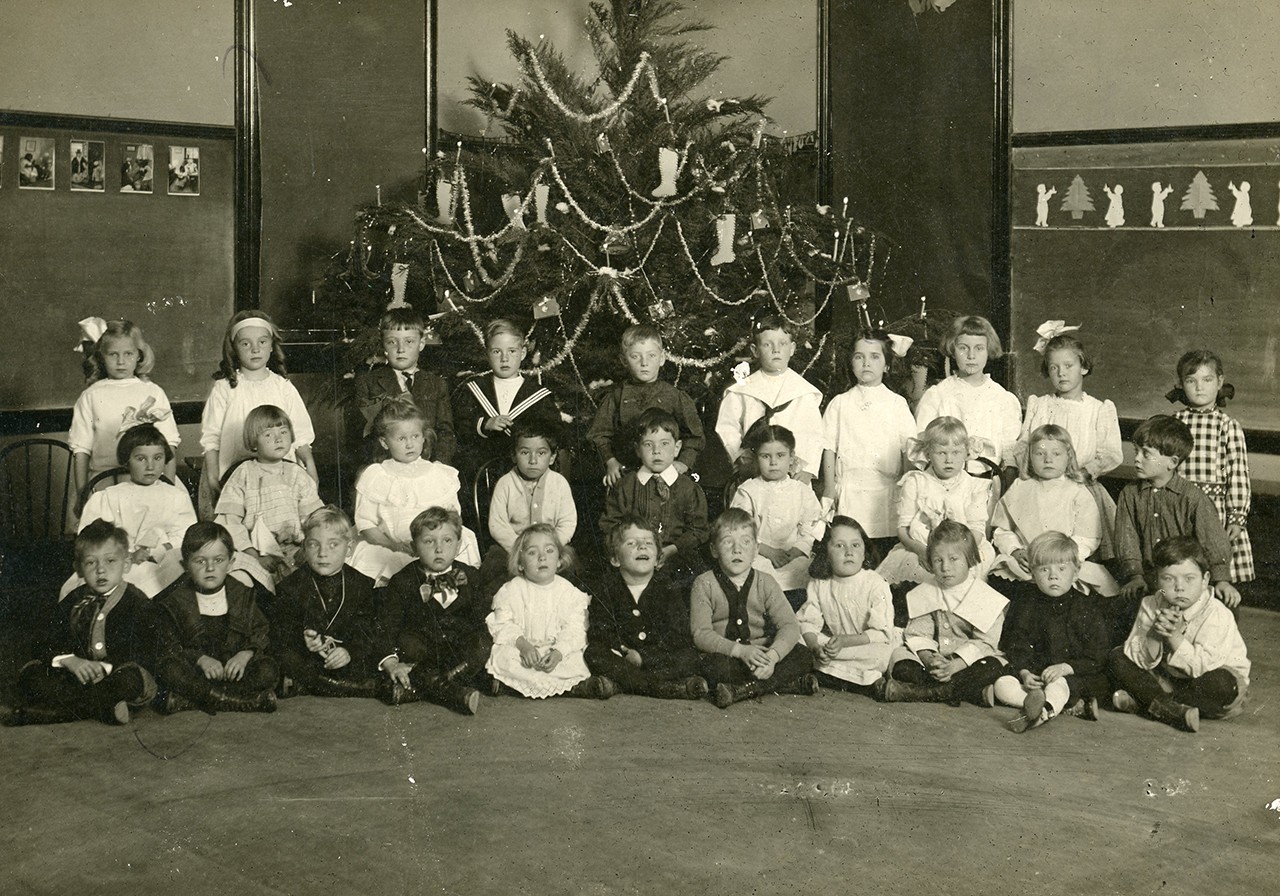
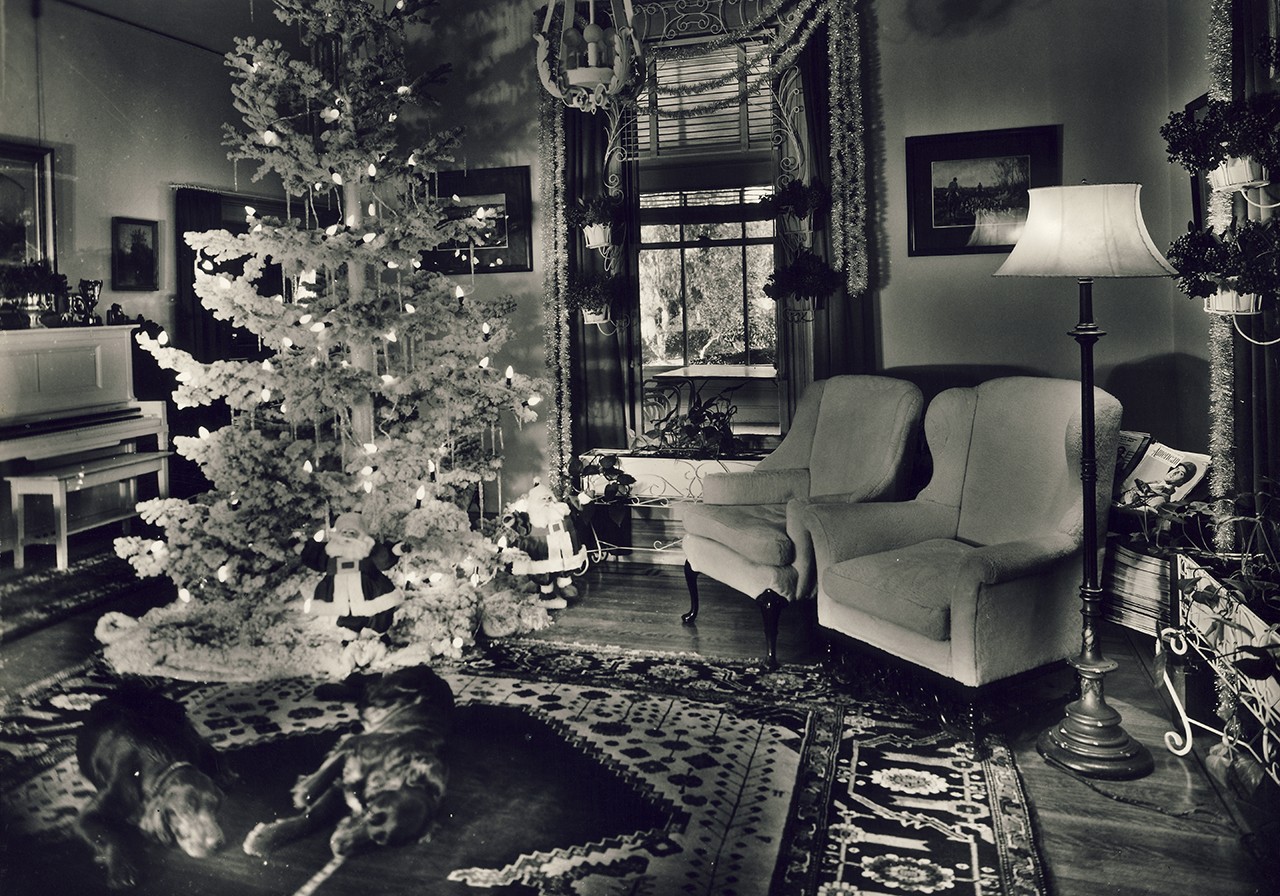
Comments 1
I learned in fourth grade (the 1950’s 😖) that the young Bavarian immigrant who dragged in the FIRst (excuse the inexcusable pun; it was actually a spruce) American tree was August Imgard of Wooster, Ohio, in 1847, because he missed the anticipation of the festivities and entertainments of the season in his homeland. He even went to the village tinsmith and had him fashion a tin star for the tree. Additional decorations were fashioned from paper.
Soon, the entire town was stopping by to have a look at the Imgards’s beautiful tree, and by the following year many of the other families began to spruce up their own homes. Within a few years all Ohio was embracing the new Christmas activity and adding strings of popcorn and cranberries.
The tomb of August Imgard stands on Madison Hill in Wooster, and every year a lighted Christmas tree 🎄 is placed there as a tribute to the man who brought to America the symbol of peace, love, and hope.